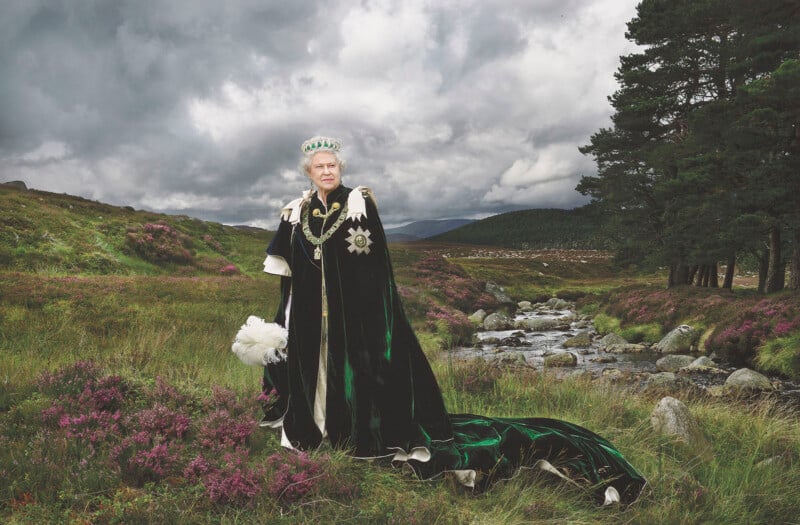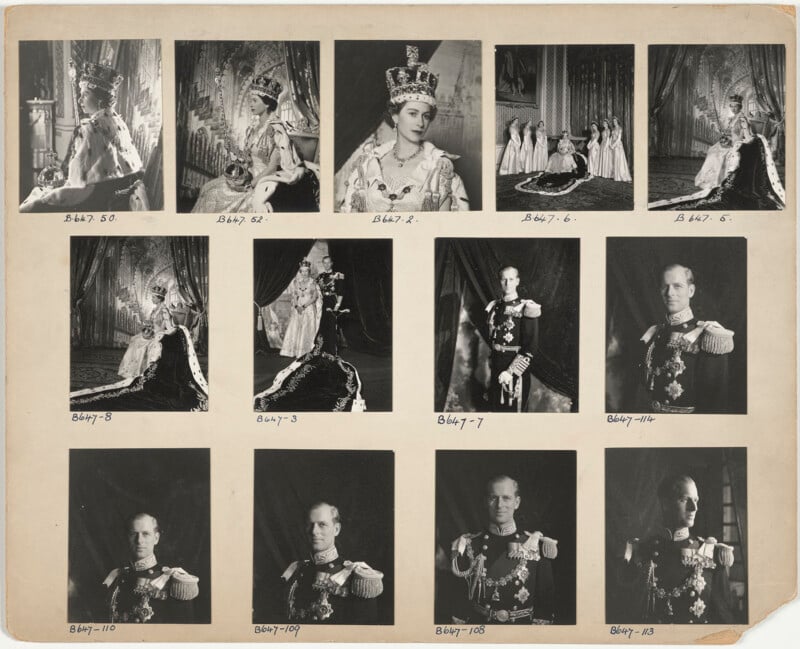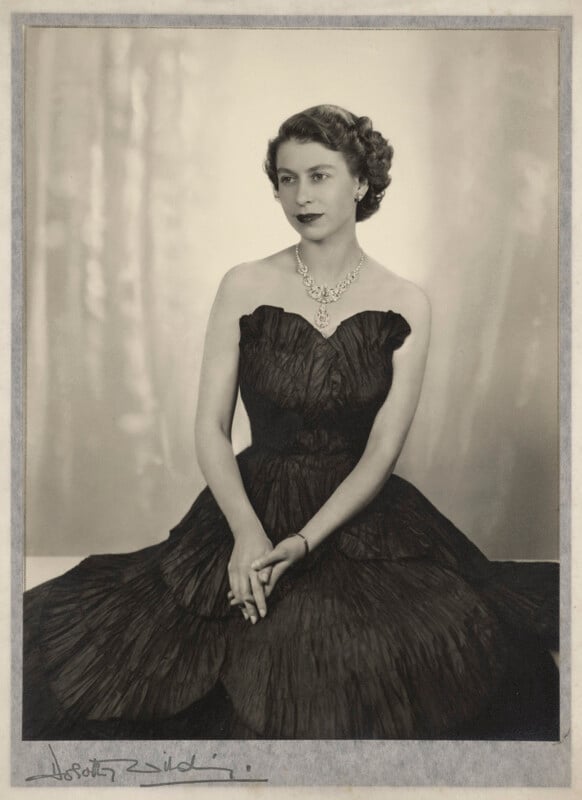The Royal Collection Trust announced that over 100 years of rarely seen royal portrait photographs, negatives, and archival materials will be displayed at The King’s Gallery in Edinburgh.
The Royal Portraits: A Century of Photography exhibition follows the evolution of Royal portrait photography from the 1920s until the present day. Rarely seen vintage prints, contact sheets, proofs, and documents such as letters and memorandums from the royal archives are included. It is the first time many of these works have been shown in Scotland.
Senior Curator of Photographs for the Royal Collection Trust and exhibition curator Alessandro Nasini handpicked the works to be featured.
Of his selections, Nasini explained, “Portrait photography is a creative process, and it has been fascinating to discover the careful decisions that were made to achieve such unforgettable portraits of the Royal Family, taken by some of the most celebrated photographers of the past century — from Dorothy Wilding and Cecil Beaton to David Bailey and Glasgow-born Rankin.”
“Although we may be used to seeing photographs on screens, the opportunity to see the original prints up close is rare, as they can’t often be on display for conservation reasons. With archival material providing context into how these photographs were made and used, I hope visitors will enjoy going behind the scenes into the process of creating royal portraits,” he shared.
A highlight of the show is a striking photograph of Queen Elizabeth II by Julian Calder. The image was taken at Balmoral Castle in 2010 and perfectly shows a highlands landscape with the Queen in Royal regalia.


The Royal Collection Trust’s exhibition news details the creation of the important historic portrait.
“Beneath an unpredictable sky and cloaked in the mantle of the Order of the Thistle, the late monarch braved the threat of rain and midges to achieve Calder’s vision, inspired by the 19th-century paintings of Clan chiefs – as seen in a behind-the-scenes photograph reproduced on a panel within the exhibition. In contrast, for her 2007 portrait of the sovereign, Annie Leibovitz — the first American to receive an official commission to photograph Queen Elizabeth II — used digital editing to superimpose the figure against a stormy sky,” the Royal Collection Trust says.
“The past century was an exciting time for portrait photography; techniques evolved rapidly, and the transition from a manual craft to an increasingly digital process is a key theme of the exhibition.”





Photographs included in the exhibition will span a century. Some of the royal families earliest, including ones from 1934, show the young Princess Elizabeth and Margaret. Later portraits show the advances in both photography and printing technology as the portraits became bigger and more colorful. The exhibition is a journey through time, as seen through the lens of photographers and Royal sitters.

“Visitors will discover the multitude of purposes royal portraits have served, from reputation-making portraits of a young Queen Elizabeth II for use on currency and stamps by Yousuf Karsh, to birthday portraits of Princess Anne by Norman Parkinson. A handwritten memorandum from Queen Elizabeth II’s Assistant Private Secretary in 1953 reveals her suggestions for which Coronation portraits should be sent to Commonwealth representatives, used to thank Maids of Honour, and given as family mementos. More recently, a photograph of Her Majesty Queen Camilla by Jamie Hawkesworth commissioned by Vogue shows The Queen with a book in her lap to represent Her Majesty’s passion for literature,” the Royal Trust explains.
The ongoing Royal Portraits: A Century of Photography exhibit runs through September 7th, 2025, at the King’s Gallery, Palace of Holyroodhouse in Edinburgh, Scotland.
Image credits: Royal Collection Enterprises Limited 2025, Royal Collection Trust, Camera Press, Snowdon, Julian Calder, Paul Whybrew



